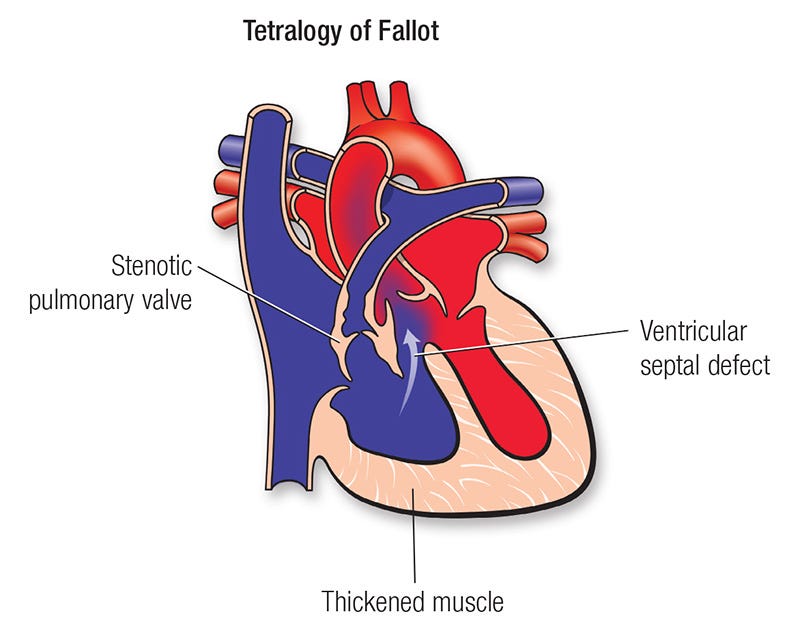Tetralogy of Fallot: A Story
Written by Aanya Deshpande
During my pediatric job shadowing, I observed how the doctor cared for patients from ages 1 to 17 throughout the day. However, one 11-year-old boy stood out to me. Before I met this patient, the doctor informed me that this boy was born with a genetic heart defect known as Tetralogy of Fallot (TOF). My eyebrows scrunched in confusion, but I followed the doctor into the patient’s room. I smiled as I greeted the boy and his father, then the doctor took over. He asked the normal questions first, then inquired about his cardiology appointments. At first, I thought the boy would freeze up and become nervous because of his condition. However, he answered everything with a big smile on his face. I admired his positive attitude in overcoming a difficult situation.
After the appointment ended, the doctor handed me a medical physiology textbook and flipped to a page discussing the TOF. I curiously perused the page with my eyes trying to find an exact definition or symptoms. However, I was stunned when I discovered what this heart defect was. I learned that TOF is when most of the body’s blood circulation bypasses the lungs, so the blood does not get oxygenated. I also learned that if a baby has this condition, they have 4 different problems in their heart. Firstly, the heart’s aorta is in the right ventricle instead of the left, or it overrides in the septum. Secondly, the pulmonary artery is much smaller than normal. Usually, blood circulates from the right atrium to the right ventricle, then it goes up the pulmonary artery, then it goes into the lungs. However, with TOF, since the pulmonary artery is small, the blood bypasses it and goes directly into the aorta, bypassing the lungs for oxygen. Thirdly, blood from the left atrium either flows through the septal hole into the right ventricle, and goes into the aorta, or it passes the septal hole and flows directly into the aorta. Finally, since the right side of the heart must pump more blood to accommodate the high pressure in the aorta, the right ventricle is significantly enlarged.
When I finished reading this section, my heart was in the pit of my stomach. I wondered how this was possible to endure, and how the boy was truthfully feeling. My empathy for the patient deepened, but the bittersweet feeling in my stomach lingered. However, I soon realized since he has to live with this condition for the rest of his life, he is simply turning his heart into one of his strengths. He changed his reality primarily with his attitude, even when he still has a massive scar on his chest from surgery. Even though I met him only once, he became one of my inspirations to overcome challenges with a smile.
Written by Aanya Deshpande from MEDILOQUY


